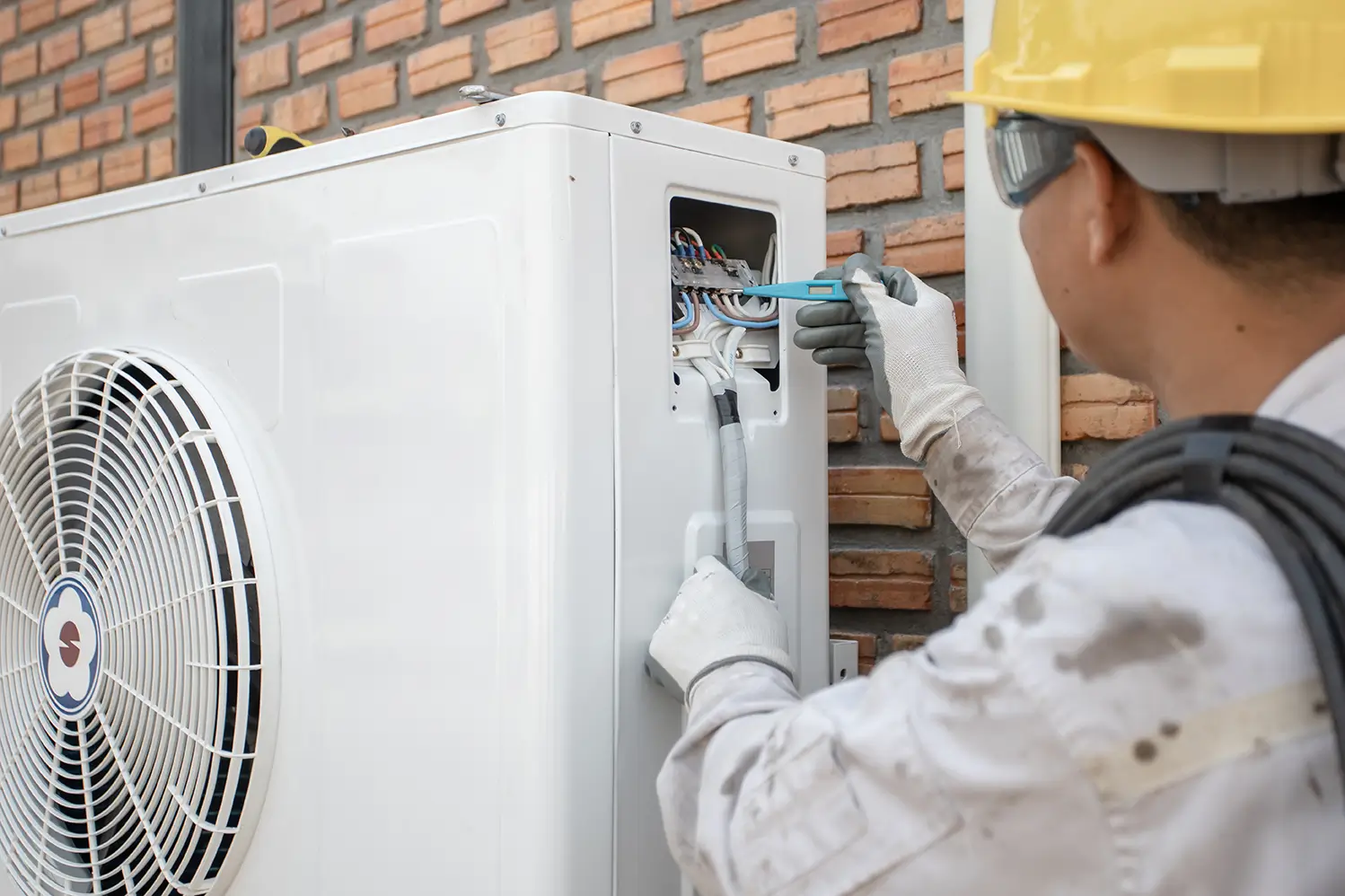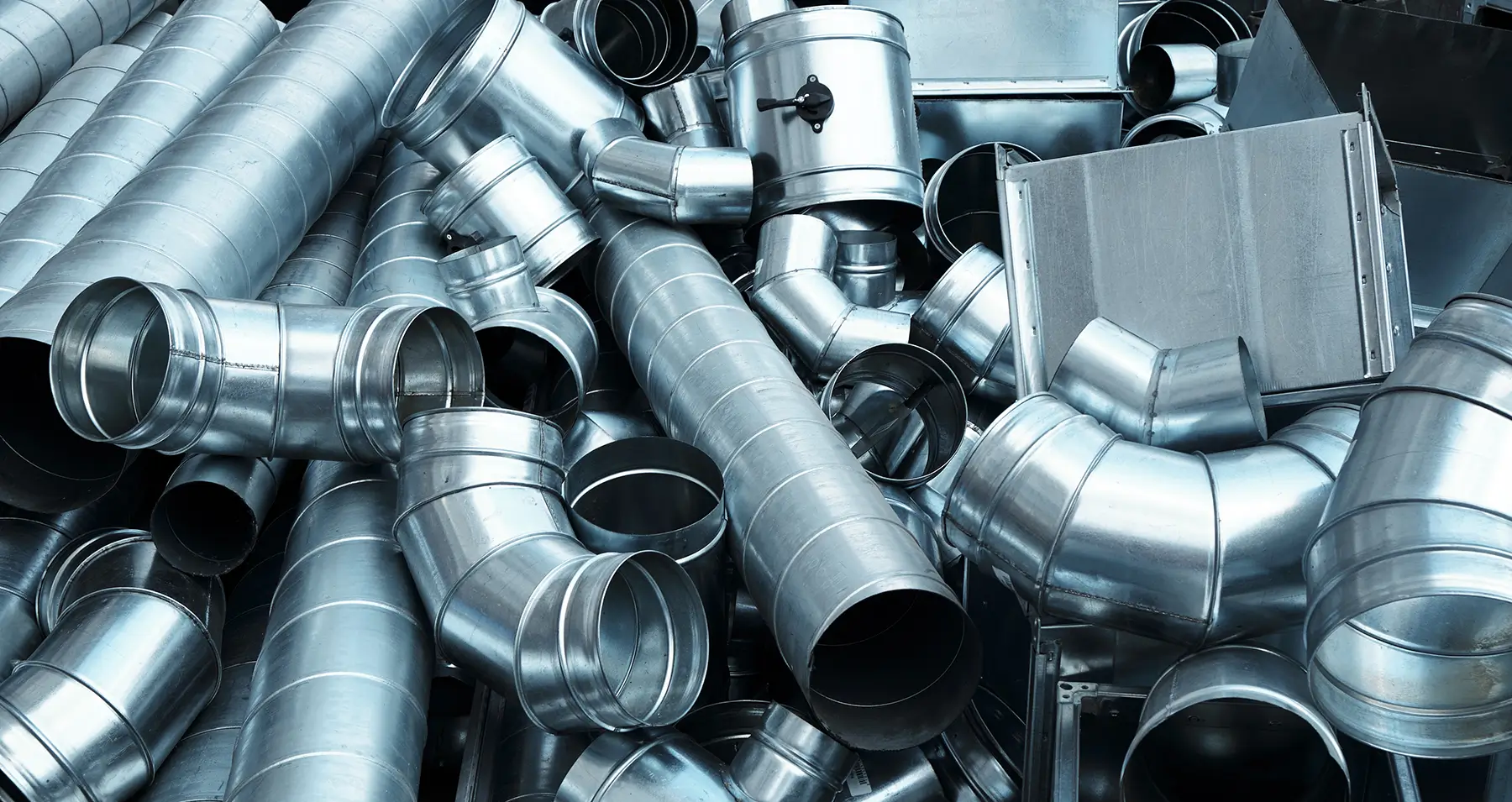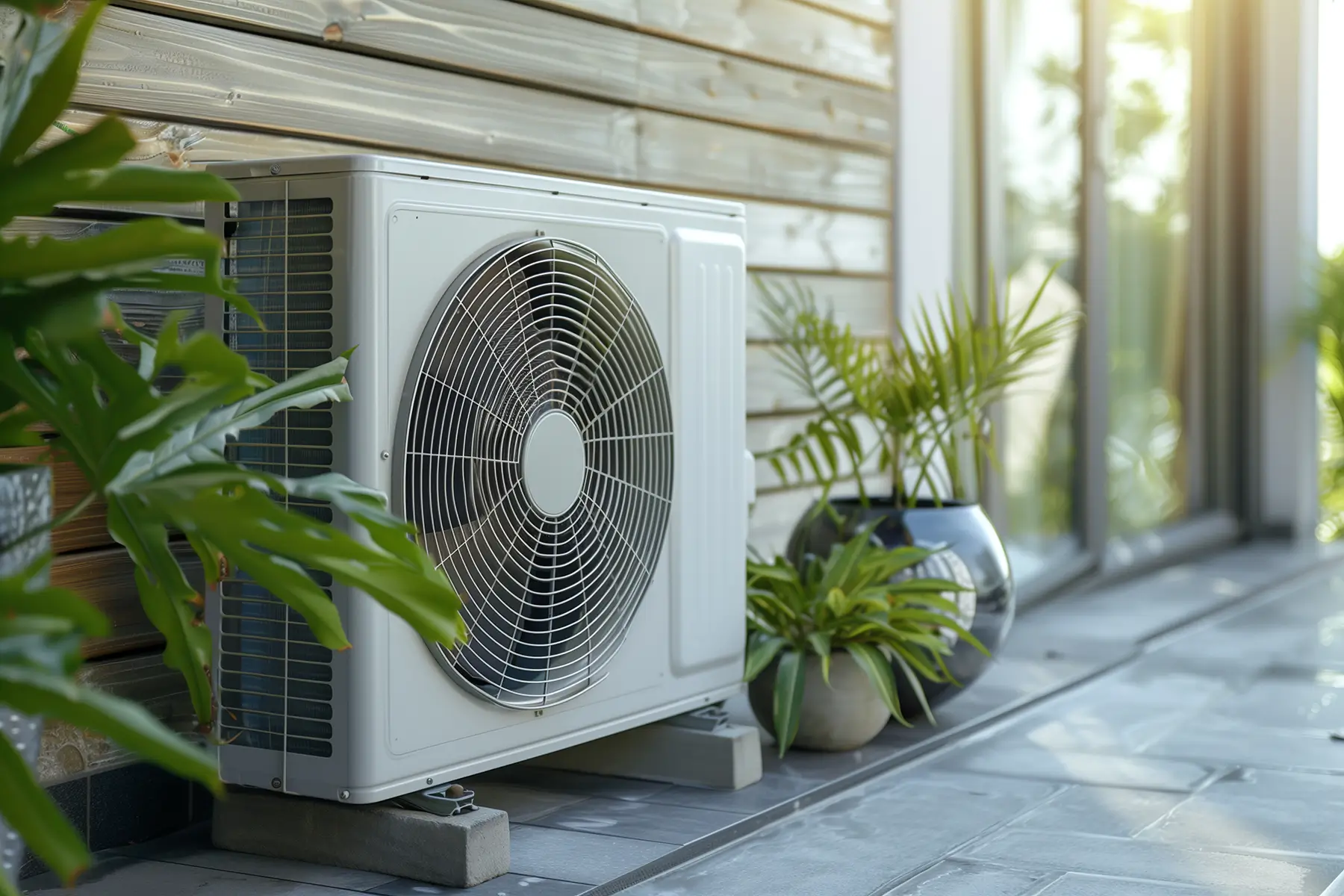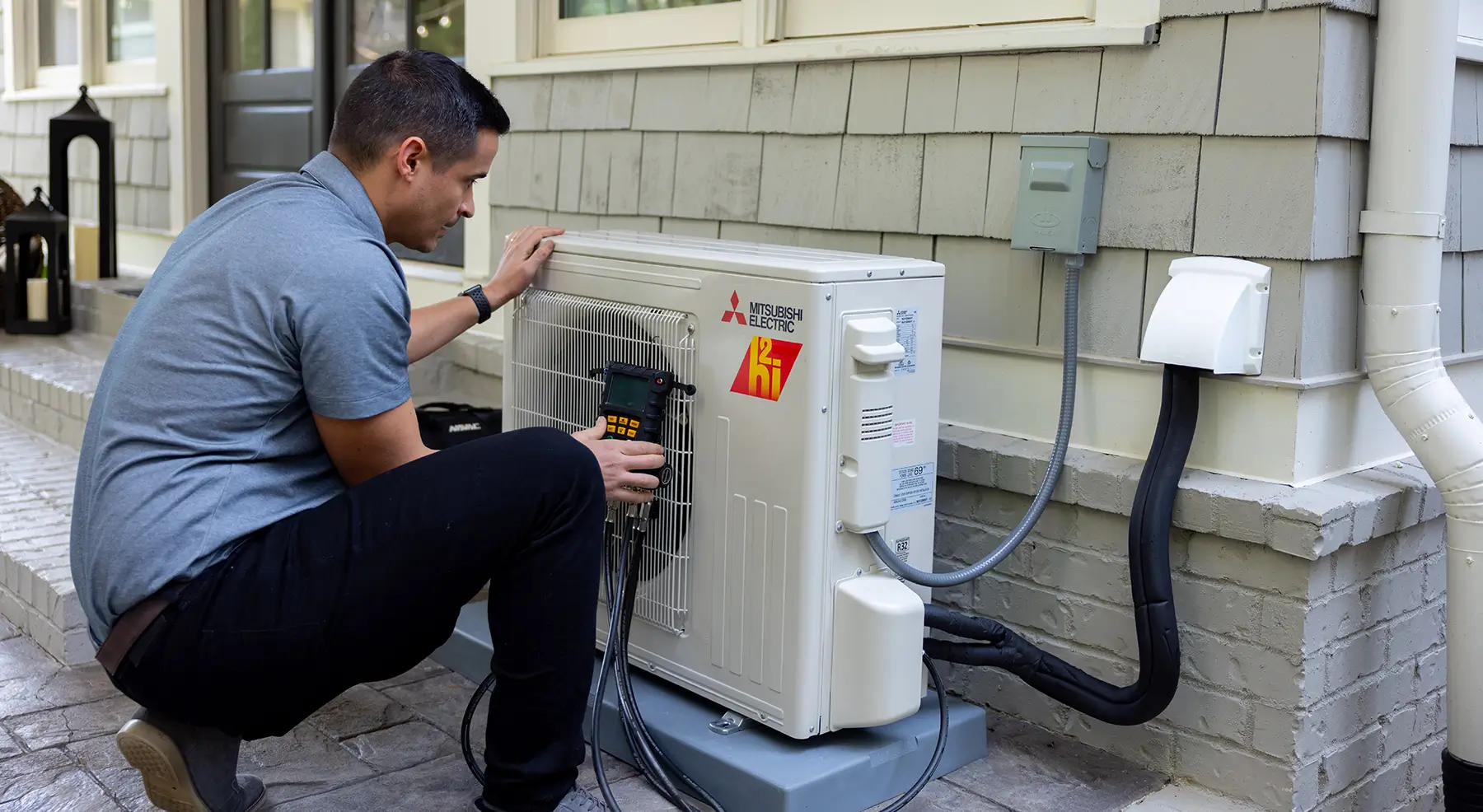Despite their benefits, misconceptions and myths persist about their functionality and suitability. In this article, we’ll debunk some of the most common myths about ductless heat pumps to help you make an informed decision.
Table of Contents
Myth 1: Ductless Heat Pumps Only Work for New Homes
Reality
- 1. Supplementary Heating: The ductless heat pump can heat your home efficiently, reducing reliance on traditional heating systems like furnaces or boilers. These conventional systems can serve as a backup during icy conditions.
- 2. Room Additions: Mini-split systems are perfect for new room additions. If you're converting a basement or adding an attic bedroom, a ductless unit ensures comfortable temperatures without extending your existing ductwork.
- 3. Cold Spots: Certain areas might remain colder than others in larger homes or buildings with inefficient heating layouts. Installing a mini-split system in those areas can improve comfort by providing targeted heating.
Myth 2: Mini-Split Heat Pumps Don’t Work in Cold Climates
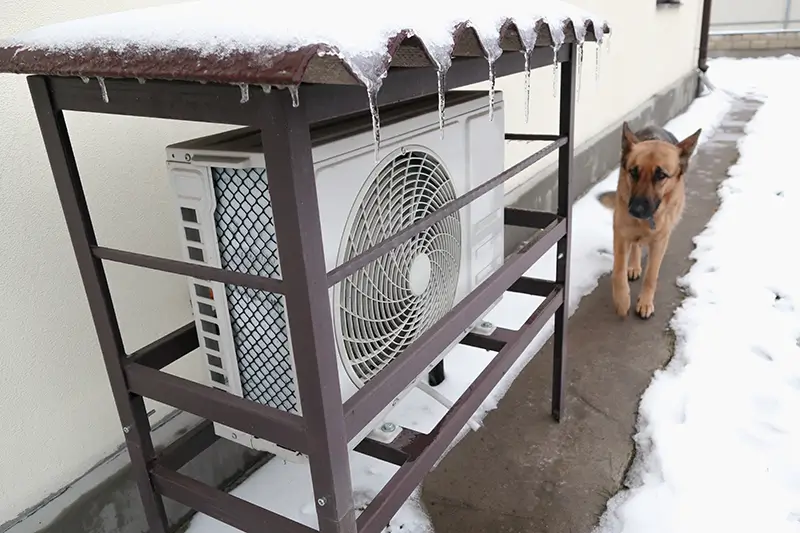
Reality
- 1. Hyper-Heat Technology: Newer models, often labeled "hyper-heat" systems, are designed to function efficiently in sub-zero temperatures. For instance, Mitsubishi Electric's Hyper-Heat models can deliver a total heating capacity of 5°F and continue to operate down to -13°F.
- 2. Inverter Compressors: Unlike traditional HVAC systems, mini-splits use inverter compressors that adjust their speed based on demand. This ability allows them to maintain consistent heating even when temperatures drop below freezing.
- 3. Backup Heating Systems: In areas prone to extremely cold weather, ductless heat pumps can work in tandem with existing heating systems. This dual-fuel approach ensures your home remains warm without relying entirely on one heat source.
- 4. Energy Efficiency: Despite the cold, these systems maximize energy efficiency by consuming only the energy required to maintain the desired temperature. This results in lower heating costs compared to oil or gas heaters.
Myth 3: Mini-Splits Are Hard to Maintain
Reality
The maintenance requirements of ductless mini-split heat pumps are less extensive than those of traditional HVAC systems. Mini-splits are relatively easy to care for if you follow a few simple steps:
-
1. Filter Cleaning:
Frequency: Filters should be cleaned about once a month.
Method: Most filters can be easily removed, washed with soap and water, and reinstalled.
Benefit: Regular cleaning keeps airflow efficient and improves indoor air quality by removing dust and allergens. -
2. Outdoor Unit Maintenance:
Debris Removal: Periodically clear any leaves, dirt, or debris from the outdoor unit to maintain optimal airflow.
Position: Ensure the unit is placed on a stable, level surface to prevent vibration issues. -
3. Professional Tune-Up:
Frequency: Schedule an annual HVAC tune-up to inspect refrigerant levels, electrical connections, and overall system performance.
Benefit: Regular servicing ensures longevity efficiency and prevents unexpected breakdowns. - 4. Self-Cleaning Features: Many modern mini-split systems have self-cleaning functions that minimize bacterial buildup inside the unit, further reducing maintenance efforts.
Myth 4: Ductless Heat Pumps Are Too Expensive

Reality
-
1. Dual Heating and Cooling Capability:
Ductless mini-splits eliminate the need to purchase separate heating and cooling systems.
One system efficiently handles winter heating and summer cooling, reducing installation costs.
-
2. Energy Efficiency:
Inverter technology adjusts the compressor speed based on real-time heating and cooling demand, preventing energy wastage.
The U.S. Department of Energy notes that ductless systems can reduce heating costs by up to 50% compared to traditional electric heating.
-
3. Zoning Benefits:
Allows homeowners to heat or cool only the rooms in use, avoiding energy loss in unused areas.
Independent temperature control in each zone further reduces overall energy consumption.
-
4. Incentives and Rebates:
Many governments and utility companies offer incentives, rebates, or tax credits for installing energy-efficient ductless systems.
These incentives can significantly reduce the initial investment cost.
-
5. Long-Term Savings:
Due to their energy efficiency, homeowners can save between $1,000 and $2,000 annually on energy bills.
Lower maintenance costs and fewer repairs also contribute to long-term savings.
Myth 5: Ductless Heat Pumps Have Short Lifespan
Reality
Contrary to the belief that ductless heat pumps don’t last long due to year-round operation, these systems can have a long lifespan if maintained properly. Here’s what contributes to their durability:
-
1. Expected Lifespan:
Well-maintained ductless heat pumps can last over 20 years, comparable to or exceeding traditional HVAC systems. -
2. Maintenance Practices:
Regular maintenance, such as filter cleaning and annual professional tune-ups, helps ensure optimal performance and extends the system's life..
Self-cleaning features in modern units reduce internal buildup, leading to fewer breakdowns.
-
3. Quality Components:
Advanced inverter compressors and quality materials increase durability and reduce wear and tear.
Outdoor units are designed to withstand various weather conditions, ensuring consistent performance.
-
4. Efficiency Over Time:
Unlike older HVAC systems that lose efficiency with age, ductless mini-splits maintain their efficiency properly.
Inverter technology reduces stress on components, preventing premature wear.
-
5. Warranty and Support:
Many manufacturers offer extended warranties, often covering up to 10 years for key components.
Access to certified technicians and replacement parts ensures long-term support.
-
6. Use in Harsh Climates:
Hyper-heat models are designed to handle extreme temperatures, preventing overwork and ensuring reliable operation in hot and cold conditions.
Myth 6: Mini-Splits Provide Uneven Cooling

Reality
Ductless mini-split systems have advanced zoning capabilities, allowing precise temperature control and ensuring even and comfortable cooling throughout your home. Here’s how they achieve this:
-
1. Zoning Flexibility:
Mini-splits can be configured in single-zone or multi-zone setups, allowing each zone to be independently controlled.
Different rooms can maintain unique temperatures, preventing hot or cold spots. -
2. Even Air Distribution:
Indoor units (air handlers) have adjustable louvers to distribute air evenly across the room.
Ceiling cassettes and floor-mounted units further enhance air distribution.
-
3. Multiple Indoor Unit Types:
Wall-Mounted Units: Easily installed at optimal heights for adequate airflow.
Floor-Mounted Units: Ideal for rooms with limited wall space.
Ceiling Cassettes: Blend seamlessly into ceilings, providing discreet and consistent airflow. -
4. Inverter Technology:
Inverter compressors adjust the system's capacity in real time, ensuring each zone receives the required cooling.
This technology minimizes temperature fluctuations and energy wastage.
-
5. Enhanced Filtration:
High-quality filters ensure efficient airflow by trapping dust and allergens, contributing to consistent cooling. -
6. Programmable Controls:
Remote controls and smartphone apps allow homeowners to set and adjust temperatures conveniently.
Some models have smart features like occupancy sensors to adjust airflow based on room usage..
Myth 7: Mini-Splits Are Unsightly and Unappealing
Reality
While some believe that ductless mini-split systems are unattractive and could disrupt a home’s aesthetic, manufacturers have developed various designs and installation options to address these concerns. Here’s how:
Multiple Indoor Unit Styles:
-
Wall-Mounted Units:
1. Sleek and compact designs fit unobtrusively on walls.
2. It can be painted to match wall colors or customized with decorative covers. -
Floor-Mounted Units:
1. It is discreet and ideal for rooms with limited wall space.
2. They are designed to blend with baseboard heating units or furniture. -
Ceiling Cassettes:
1. It is recessed into the ceiling for a low-profile appearance.
2. Suitable for larger rooms, providing uniform airflow with minimal visibility. -
Concealed Duct Units:
1. It is recessed into the ceiling for a low-profile appearance.
2. Suitable for larger rooms, providing uniform airflow with minimal visibility. -
Concealed Duct Units:
1. It is recessed into the ceiling for a low-profile appearance.
2. Suitable for larger rooms, providing uniform airflow with minimal visibility.
-
1. Customizable Design Features:
Units come in various shapes, sizes, and colors to match diverse interior designs.
Adjustable louvers direct airflow to desired areas without compromising style. -
2. Multi-Zone Flexibility:
Multi-zone systems allow homeowners to choose different unit styles for different zones.
Customize unit types according to each room's design requirements. -
3. Architectural Adaptability:
It is ideal for older or historic homes where traditional HVAC systems would disrupt aesthetics.
Compact and flexible installations preserve architectural integrity. -
4. Quiet Operation:
Modern units operate quietly, often at noise below 20 dB, ensuring minimal disturbance.
It is ideal for bedrooms, living rooms, and home offices. -
5. Smart Controls:
Remote controls and smartphone apps minimize the need for visible wall-mounted thermostats.
Integration with home automation systems provides seamless control.
Myth 8: Ductless Heat Pumps Are Difficult to Install
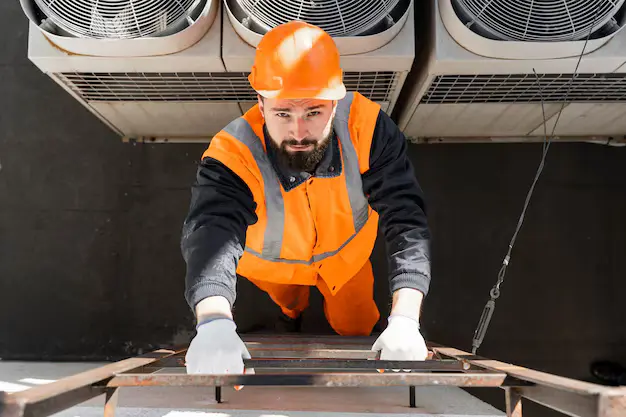
Reality
Installing ductless heat pumps is straightforward and often less disruptive than installing traditional HVAC systems. Here’s why:
-
1. No Ductwork Required:
Unlike central HVAC systems that require extensive ductwork, ductless heat pumps only need small piping connections between the indoor and outdoor units.
Eliminates the need for significant renovations or structural modifications. -
2. Simple Installation Process:
Indoor Unit:
Wall-mounted, floor-mounted, or ceiling cassette units can be installed with minimal wall penetration.
A three-inch hole is typically sufficient to pass refrigerant lines and electrical connections.
Outdoor Unit:
Placed on a stable surface or mounted on brackets against an exterior wall.
Connects to the indoor unit(s) through refrigerant lines. -
3. Flexible Placement:
Indoor units can be strategically positioned to maximize airflow and meet aesthetic preferences.
Outdoor units can be placed up to 50 feet away from the indoor unit, providing flexibility in location. -
4. Installation Time:
Professional installation usually takes a day or two, depending on the system's complexity.
Multi-zone systems may take longer but are still quicker to install than traditional HVAC systems. -
5. Minimal Structural Disruption:
Suitable for historic homes, room additions, and older buildings where installing ductwork isn't feasible.
There is no need for additional construction, such as expanding walls or ceilings to accommodate ductwork. -
6. Lower Labor Costs:
It is less labor-intensive compared to installing ductwork..
Results in reduced installation costs. -
7. Professional Installation:
Certified HVAC technicians ensure optimal system performance and efficiency.
Professional advice on proper sizing and unit placement enhances comfort and savings.
Myth 9: Ductless Heat Pumps Collect and Spread Bacteria
Reality
A misconception exists that ductless heat pumps are prone to collecting and spreading bacteria due to their continuous operation. However, modern ductless mini-split systems are designed with advanced filtration and cleaning technologies that improve indoor air quality. Here’s how:
-
1. Self-Cleaning Features:
Many models include self-cleaning functions that reduce internal moisture buildup and prevent mold and bacteria growth.
After the shutdown, an internal fan briefly dries the heat exchanger. -
2. High-Efficiency Filtration:
It has multi-stage filtration systems to trap dust, pollen, allergens, and other airborne particles.
Filters include:
Primary Filters: Remove larger particles like dust and pet hair.
Electrostatic Filters: Capture finer particles like pollen and mold spores.
Activated Carbon Filters: Reduce odors and harmful gases.
-
3. UV and Anti-Microbial Coatings
Some units feature ultraviolet (UV) lamps that sterilize the air passing through, killing bacteria and viruses.
Anti-microbial coatings on coils and filters further inhibit the growth of bacteria and mold. -
4. Easy Filter Maintenance:
Removable filters can be washed or replaced periodically.
Simple access ensures homeowners can maintain filters regularly, keeping the air fresh and clean. -
5. No Ductwork Means Less Contamination:
Traditional ducted systems can harbor dust, mold, and bacteria within the ductwork, which can then spread throughout the home.
Ductless systems eliminate this issue by delivering air directly from the unit to the room. -
6. Professional Cleaning:
Annual professional maintenance includes cleaning and inspecting the system, ensuring continued high air quality.
Technicians can detect and remove any potential contaminants.
Conclusion
Ductless heat pumps debunk many myths surrounding their functionality, cost, and efficiency. By providing energy-efficient heating and cooling, improving indoor air quality, and offering customizable designs, they have proven to be an innovative and superior solution for modern climate control.
Key Takeaways
- Versatile Application: Suitable for new and existing homes, room additions, and cold climate regions.
- Energy Efficiency: Advanced inverter technology and zoning capabilities reduce energy consumption.
- Long Lifespan: Ductless heat pumps can last over 20 years with proper maintenance.
- Design Flexibility: Multiple indoor unit styles blend seamlessly into any interior décor.
- Improved Air Quality: High-efficiency filters and self-cleaning features ensure cleaner indoor air.
In summary, ductless heat pumps provide unparalleled efficiency, flexibility, and long-term savings, making them a smart investment for heating and cooling.

